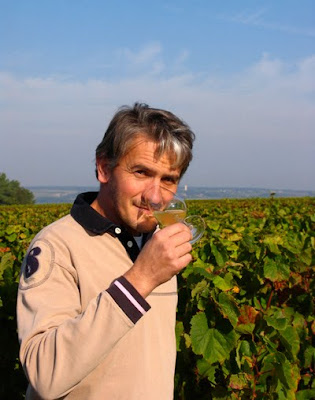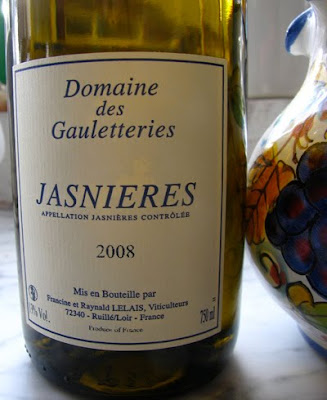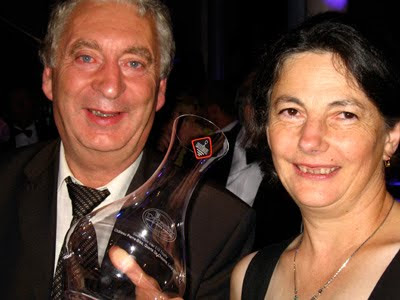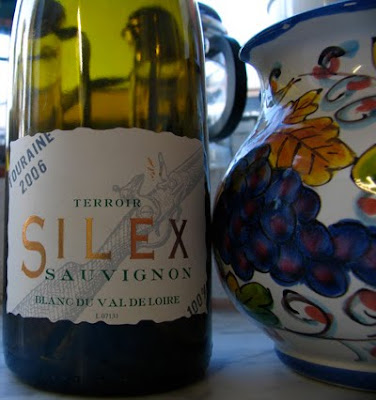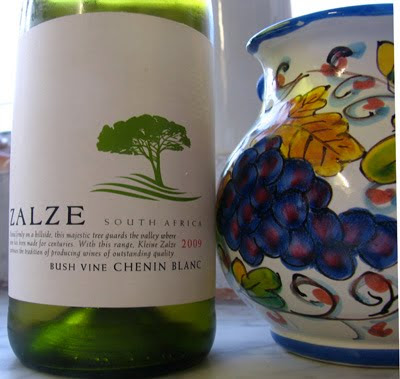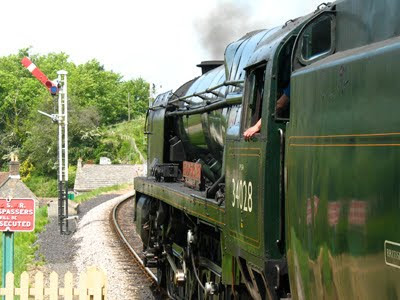 2008: Cabernet Franc, Saumur-Champigny early October
2008: Cabernet Franc, Saumur-Champigny early October
The RSJ's 2009 wine events calendar concluded with our first detailed look at the 2008 vintage – five whites followed by four reds.
Once again 2008 was a year when a fine autumn rescued what looked to be a pretty miserable Loire vintage. Low points during the year included a severe early April frost in the Pays Nantais, drastically reducing the crop, and hail in parts of Sancerre and Pouilly-sur-Loire. August was cold and overcast but dry with temperatures rarely over 20˚ and usually too cool to eat outside in the evening. Fortunately the sun came out in September as the wind moved round to the east and there was fine weather until the end of October. Temperatures were never high with only a few days around 25˚. The harvest was late, particularly in relation to recent years when the harvest has been considerably earlier than it was traditionally.
Fortunately 2008 was a small crop, so that despite the temperature deficit during the summer the grapes were able to ripen properly and benefitted from a long hang time to full develop their flavours. Like 2007, 2008 is notable for its clean, precise flavours. The wines are generally fuller than those of 2007 and less austere, although the acidity is more marked than in years such as 2005 and 2006. There are some very good 2008 dry whites as well as demi-secs and good reds with more flesh than 2007. The top red cuvées, although few have yet been bottled, should have the potential to age some time. However, as far as sweet wines are concerned 2007 is certainly superior to 2008. As the weather broke at the end of October 2008, the best of the sweet wines are light and charming, generally to be enjoyed young. And it's not a good idea to match them with desserts.
Aperitif 
2008 Sauvignon VDP Val du Loire Domaine de Bablut, Christophe Daviau £8.50We started with this Sauvignon Blanc from Anjou. Sauvignons from this part of the Loire tend to be richer with flavours of yellow plum and heading towards the exotic fruit end of the scale rather than the more citric, mineral notes from Sancerre and the other Central Vineyards. Appeared to hit the spot for a good number of the assembled company – some 30 strong.
Whites
 2008 Saumur Blanc, Domaine des Hauts de Sanziers, Dominique Tessier £7.70
2008 Saumur Blanc, Domaine des Hauts de Sanziers, Dominique Tessier £7.70
We served Dominique's lemony and quite austere Saumur Blanc by itself. I like its clean precise flavours but it is clearly not to everyone's taste as one taster found it green. This may take on some additional weight wit a little more time in bottle.
We served these three Sauvignons with the first course:

2008 Touraine Sauvignon, Domaine Roussely, Vincent Roussely £8.25
I continue to be very impressed with the wines of Vincent. This 2008 is a good combination of citric freshness and generous fruit with gooseberry and grapefruit flavours.
Vincent is involved in a scheme called Mes Vignes (http://www.mesvignes.com/). Through Mes Vignes you can buy 12 vines (or multiples of 12), follow the work in the vineyard, be involved in the harvest and then receive wine from your vines. Currently there is a video on the home page of Mes Vignes, which features Vincent.

2008 Quincy, Domaine des Ballandors, Jean Tatin and Chantal Wilk £11.00
The Tatin's Quincy is often quite citric and lean when young and this is no exception – I expect it will take on more weight with a bit more time in bottle.

2008 Sancerre, Les Pierris, Domaine Roger Champault et Fils £11.25
From vineyards planted on Les Caillottes – limestone with very little soil. About 40% of Sancerre's vineyards are planted on this type of rock. The resulting wines are expressive young and tend to mature quickest of the three types of terroir in Sancerre. They are generally the first to be bottled. The 2008 Les Pierris has those citric and mineral notes typical of Sancerre.
Served with:
Seafood ravioli, cauliflower puree, red pepper coulis
Preferences
Tasting the three Sauvignons without food the Quincy emerged as the favourite just in front of the Touraine with the Sancerre some way behind. However with food, the Sancerre leapt up to take top spot above the Touraine with the Quincy well down.
••
Reds
Again we served the first red by itself.

2008 Anjou Rouge, Château de la Roulerie, Philippe Germain £9.15
Philippe Germain has 24 hectares in Saint-Aubin-de-Luigné at the western end of the Layon Valley. These 24 hectares are split into 22 parcels, which I would have thought are a nightmare to work, although they do spread the risk of hail and frost damage. The 2008 has attractive coal tar and sooty aromas – one of the characteristics of Loire Cabernet Franc – and is easy drinking.
Followed by three Cabernet Franc reds, all at domaine level as prestige cuvées are not yet available :
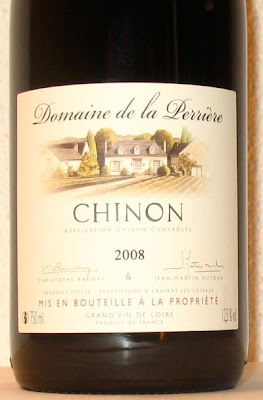
2008 Chinon, Domaine de la Perrière, Baudry-Dutour £9.25
Pleasant easy drinking red from vineyards in the commune of Cravant-les-Coteaux planted on flat gravel land.

2008 Saumur-Champigny Domaine de Nerleux, Régis Neau £9.50
Drinking well now, easy drinking not a heavyweight. Régis has 84 hectares of vines mainly Chenin Blanc (38ha) and Cabernet Franc with one hectare of Chardonnay which is used in the Crémant de Loire.

2008 Saint-Nicolas-de-Bourgueil, Les Rouillières, Frédéric Mabileau £10.30
The most structured of the four reds and the one with the most complexity and concentration. This ideally needs a little more time in bottle to round out, although it already works well with food. Frédéric now has 27 hectares of vines.
Served with:
Roast saddle of lamb, honey roast parsnips, broccoli, mashed potato, red wine jus
Preferences
The Saint-Nicolas-de-Bourgueil was the clear winner both without and with food. Not surprisingly, given its greater structure, the preference was even more clear cut with the lamb. Of the other two, the Chinon was preferred without food, while the Saumur-Champigny took over second place with the lamb.
Dessert
Pear and walnut tart with vanilla ice cream
Next tasting dinner will on Monday 18th January 2010


